In the bustling world of AI chatbots, two contenders have emerged as leaders – Google Bard and ChatGPT. With a shared aim of facilitating seamless and intelligent interactions, these digital juggernauts are redefining the boundaries of machine-human communication.
- Google Bard, Google’s conversational AI service, uses its advanced large language model PaLM 2 to deliver accurate, web-sourced responses.
- On the other side, ChatGPT, developed by OpenAI, rides on the GPT-3.5 model, offering human-like responses based on a vast corpus of internet text data.
Their applications span various niches, from coding assistance to solving math problems and creative writing – making them invaluable assets in many professional arenas.

In a recent UX & SEO analysis by Plerdy, the user-friendly design and accessible interfaces of both chatbots were lauded, enhancing the overall user experience. In addition, the unique language models powering these AI chatbots have proven highly effective in generating accurate and relevant responses, contributing to a favorable SEO ranking.
As these AI titans evolve, they persist in transforming our interaction with technology, making the world a little more connected, one conversation at a time.
What is Google Bard?
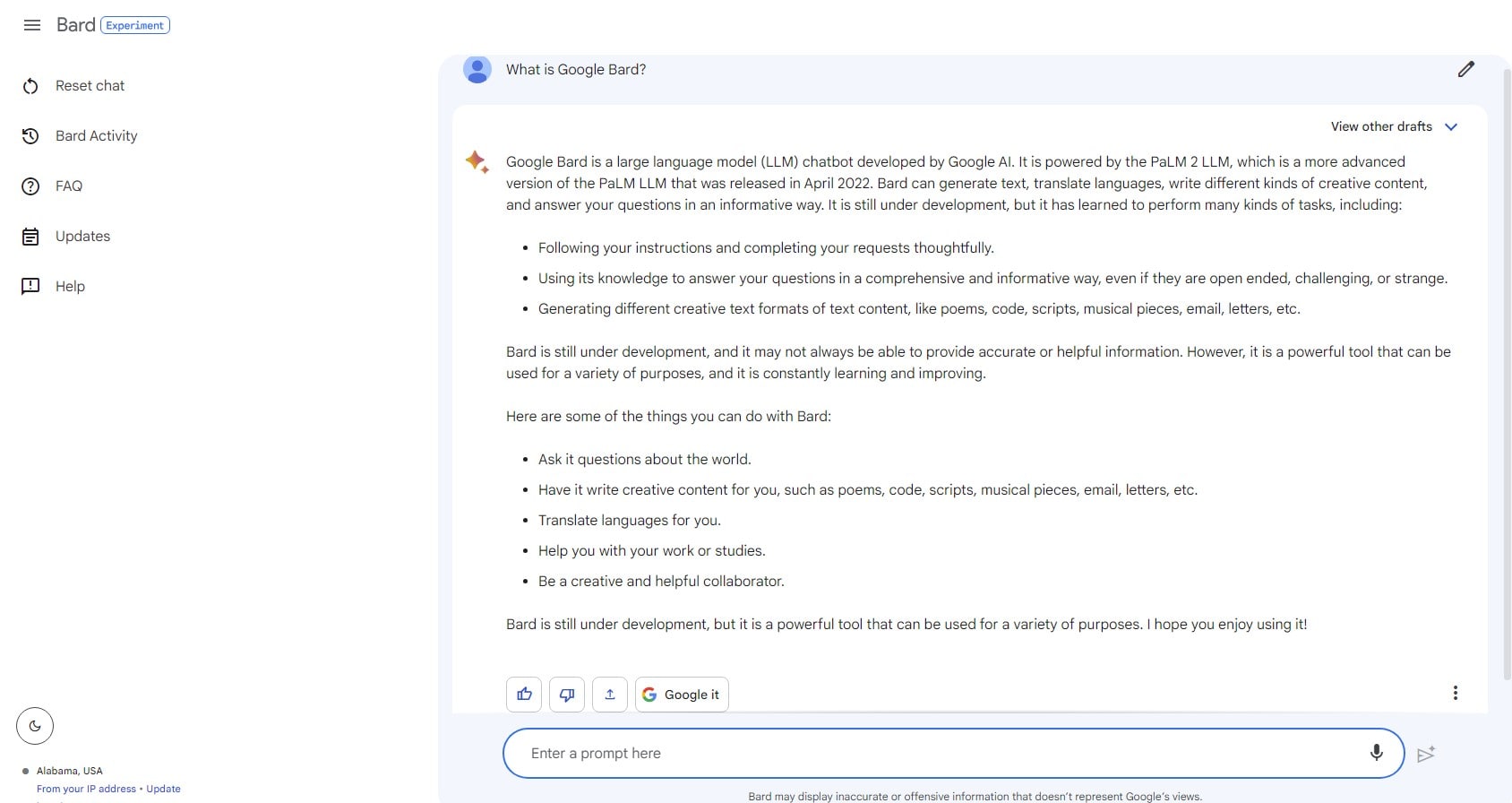
Unleashed on February 6, Google Bard enters the stage as an experimental, conversational AI chat service, rivaling ChatGPT in functionality with a unique twist – it leverages the web for its information. Bard, powered by Google’s premier large language model, PaLM 2, is adept at many tasks – coding, solving math problems, and even assisting with writing tasks. Key features of Google Bard include:
- Wide Accessibility: No longer restrained by a waitlist, Bard is accessible to the general public.
- Multilingual Support: Launching with support for Japanese and Korean, Bard is on track to support 40 additional languages.
- Powered by Google’s LLMs: Making a bold move, Google opted to power Bard with its large language models, LaMDA and PaLM 2.
However, Bard’s journey was smooth. A rough launch saw inaccuracies in a demo about the James Webb Space Telescope, leading to significant negative feedback. Yet, amidst controversy and challenges, Google Bard persists. The rapid success of ChatGPT-4, which gained over a million users within a week of launch, fuelled Google’s determination to make a mark in this hot space, despite the hurdles.
What is ChatGPT?
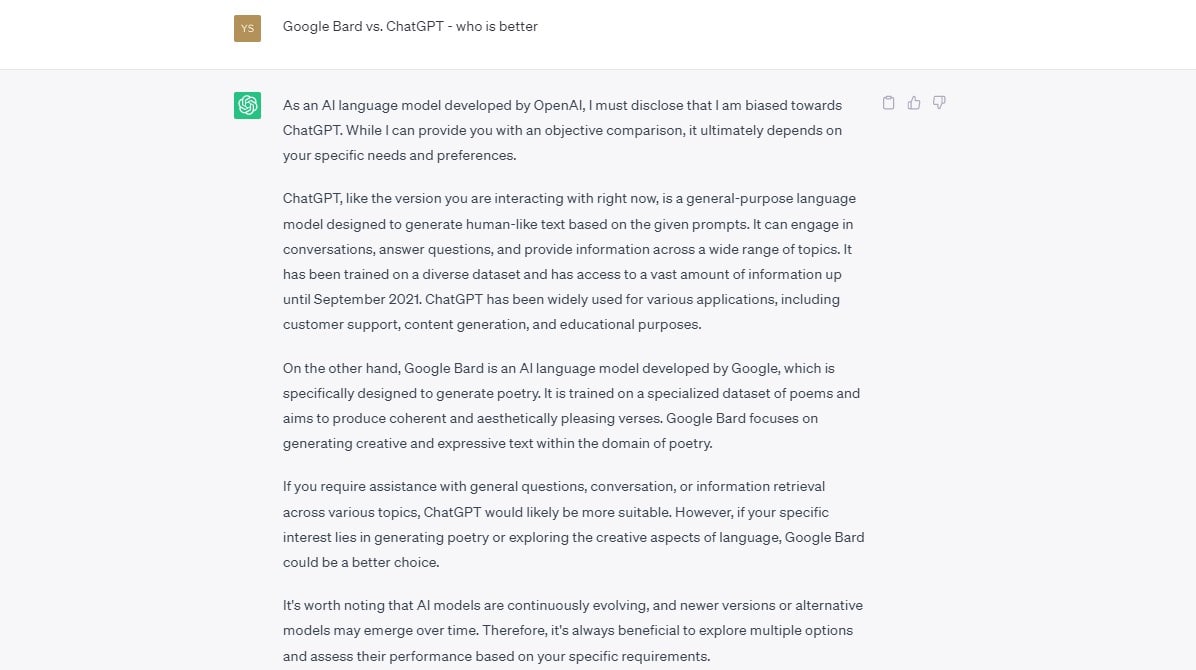
ChatGPT, “Chat Generative Pre-trained Transformer,” is an AI chatbot powered by large language models (LLMs) developed by OpenAI. Introduced as a research preview in November 2022, it quickly became a tech sensation, gaining 100 million users in just two months and sparking an AI arms race among tech giants like Microsoft and Google.
At the core of ChatGPT lies the ‘transformer’ architecture, a type of neural network well-suited to natural language processing tasks. It’s built for generative pre-training, which means it’s trained on a massive amount of text data to predict the next word in a sequence. Initially based on GPT-3 and now updated with GPT-4, this model was trained on 570GB of text data from the internet, allowing it to generate human-like and frequently accurate responses to a vast range of questions.
Key features of ChatGPT include:
- The ability to generate essays, articles, and poetry.
- A simple text box interface that allows for conversational interactions.
- The capacity to admit its mistakes and challenge incorrect premises.
While still available for free use, ChatGPT now also offers a paid tier. Despite the arrival of competitors like Google’s Bard, and some inherent limitations, ChatGPT continues to hold its ground. The introduction of ChatGPT-4, with new plugins and an API for developers, further extends its capabilities, maintaining its position as a leading player in the AI chatbot space.
Comparing Google Bard, ChatGPT and ChatGPT-4
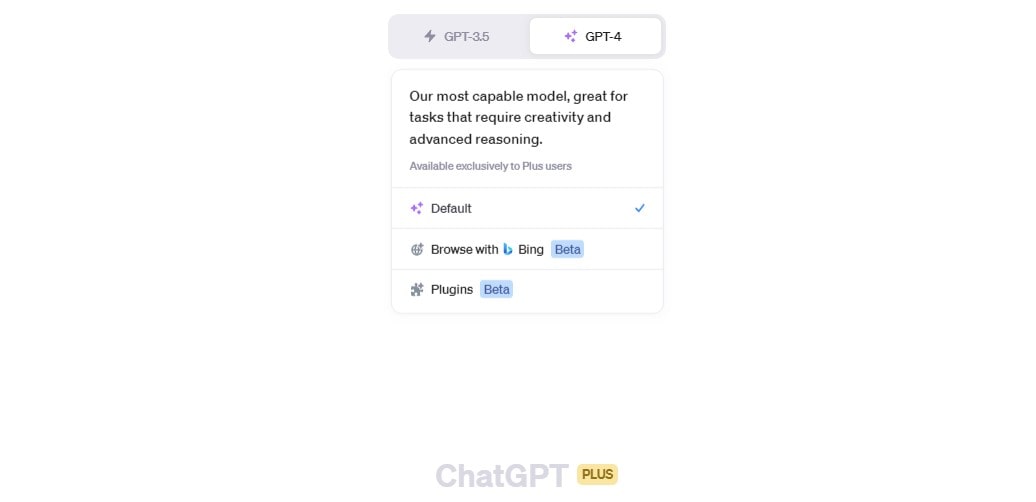
Get set for a thrilling showdown – Google Bard, ChatGPT, and the new sensation, ChatGPT-4, are all vying for the top spot in AI chat services. But first, let’s delve into the key differences:
- Google Bard: Unveiled in early 2023, this experimental AI service from Google draws its knowledge directly from the web, making it a veritable powerhouse of information. Bard utilizes Google’s advanced large language model, PaLM 2, to deliver high-performance responses and correct previous issues. While it had a few hiccups at launch, Bard has steadily improved and expanded its capabilities, including supporting multiple languages.
- ChatGPT: This game-changing innovation was first introduced in November 2022 and shot to fame almost immediately, amassing over 100 million users in two months. Built on the transformer architecture, ChatGPT draws on vast data to generate human-like and intelligent responses.
- ChatGPT-4: The latest iteration from OpenAI, ChatGPT-4, has been making waves in the AI space. With an even more extensive dataset and advanced capabilities, this model promises to elevate the AI chatbot experience.
Ultimately, each of these AI services brings unique strengths to the table. Google Bard flexes its web-based knowledge and multi-language support, while ChatGPT’s swift rise to fame and widespread usage highlights its appeal. Lastly, ChatGPT-4, while still new, teases an exciting future packed with even more impressive AI capabilities. Stay tuned as we witness the unfolding of this exciting AI chatbot race.
Performance Comparison
Meet the heavyweight champions of the AI world – Google Bard, ChatGPT, and ChatGPT-4. Each offers a unique blend of features, but how do they stack up in performance?
Google Bard, Google’s innovative conversational AI, delivers an experience akin to ChatGPT but with a twist. It pulls information directly from the web, ensuring up-to-date responses. Despite a rocky start, Bard is showing promising signs of maturity, powered by Google’s Large Language Model, PaLM 2.
On the other hand, ChatGPT, developed by OpenAI, has been making waves since its introduction in November 2022. With its ability to craft human-like responses, it’s no surprise it became the fastest-growing app in history. ChatGPT’s performance, driven by its GPT-3.5 model, has been impressive, although it occasionally needs more accurate responses.
Let’s talk about the new kid on the block – ChatGPT-4. This latest iteration of OpenAI’s tech is designed to improve performance. Boasting an enhanced language model, it promises to push the boundaries of what AI can achieve.
Here’s a quick rundown of their core strengths:
- Google Bard: Real-time web information powered by PaLM 2
- ChatGPT: Human-like responses, rapid growth, and wide adoption
- ChatGPT-4: Improved language model, high performance, and expanding capabilities
In the end, each of these AI tools offers an exceptional blend of features and performance. However, it’s the continuous improvements and commitment to excellence that will ultimately determine their success. As they evolve, expect to witness an AI revolution like no other.
Use Cases
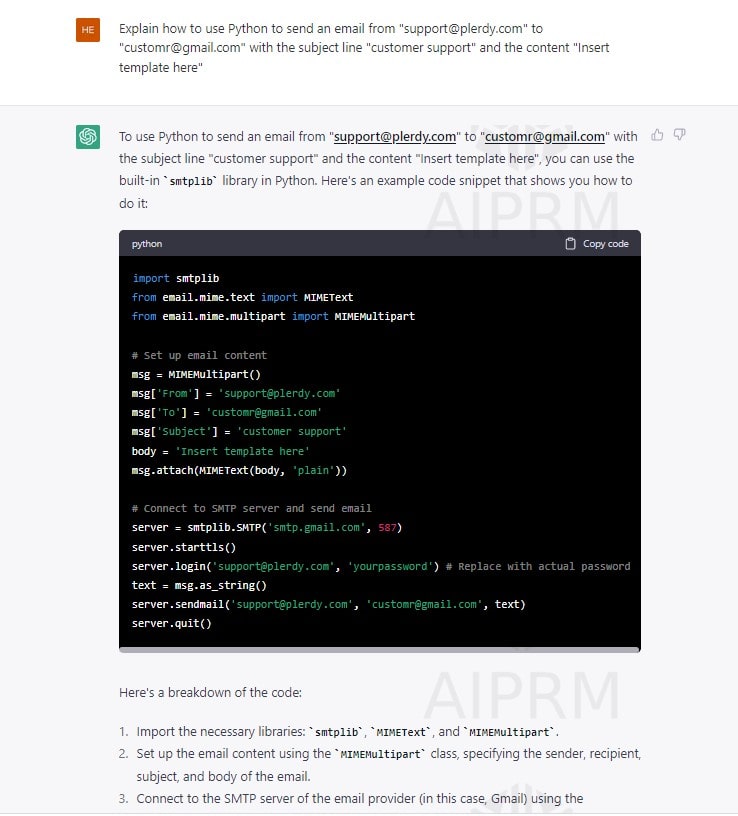
Experience the future of conversational AI with Google Bard and ChatGPT. These state-of-the-art tools serve as virtual assistants, delivering intelligent responses to your queries and tasks. Moreover, the latest generation, ChatGPT-4, promises even more sophisticated and accurate capabilities.
Here are a few use cases that showcase the power of these AIs:
- Content Creation: Draft blog posts, articles, and social media updates. With their deep language understanding, Google Bard and ChatGPT provide unique insights, helping you craft engaging and appealing content.
- Coding Assistance: Struggling with coding issues? These AI tools can provide accurate and helpful suggestions to streamline your coding process.
- Learning Support: Boost your understanding of complex topics. Google Bard and ChatGPT can explain concepts in a simple, easy-to-understand way, making them excellent learning companions.
For example, imagine you’re preparing a report on climate change. With Google Bard or ChatGPT, you could gather key facts, generate comprehensive summaries, and even proofread your work. Their ability to pull information from vast resources, and deliver clear, accurate responses, makes them invaluable allies in any information-intensive task.
So, why wait? Embrace the future of AI conversation today with Google Bard and ChatGPT – your personal, intelligent, and versatile virtual assistants.
Privacy and Ethics
Google Bard and ChatGPT are the titans of AI-driven chat services, setting a new pace in digital communication. But as the spotlight shines on these industry leaders, discussions around privacy and ethics have surged to the forefront.
- Google Bard, an experimental conversational AI service, operates on Google’s large language models—LaMDA and PaLM 2. It’s become a benchmark for other AI chat services, but its launch stirred controversy due to the inaccurate information it delivered during a demo.
- ChatGPT, launched in November 2022 by OpenAI, offers human-like interaction thanks to its underlying GPT-3.5 and even more advanced GPT-4 models. But it’s not without its share of challenges. Its creators openly admit that it can sometimes provide misleading information, prompting the need for users to remain vigilant.
These revelations underscore the importance of privacy and ethics in AI. Users need assurance that their conversations are safe from prying eyes and that the AI they interact with adheres to a strict code of ethical conduct. It’s a delicate balancing act—maintaining user trust while pushing the boundaries of AI capabilities.
One step toward this goal involves the application of robust data anonymization methods. By stripping personally identifiable information from the data used in training these models, user privacy can be safeguarded. Moreover, developing comprehensive ethical guidelines for AI behavior is imperative, ensuring these chatbots don’t inadvertently cross moral boundaries.
The journey to the perfect AI chat service isn’t over—it’s just begun. As Google Bard and ChatGPT evolve, so will the discussions around privacy. The stakes are high, but the potential rewards are immense.
Google Bard vs. ChatGPT: User Experience
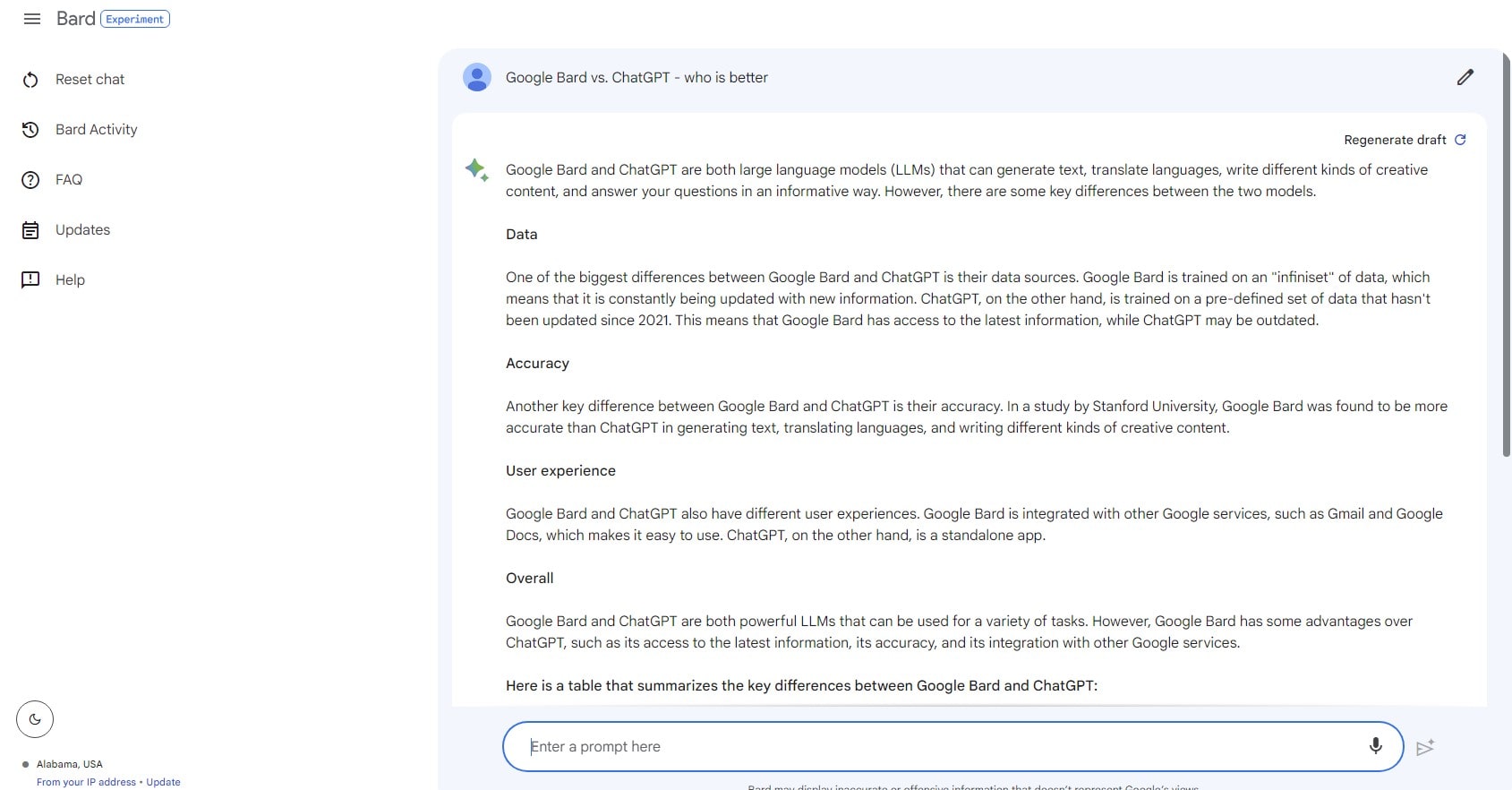
In AI chatbots, Google Bard and ChatGPT are prominent players, each providing unique user experiences. Let’s dive into their features:
- Google’s experimental AI chat service Google Bard uses LaMDA and PaLM 2. It comes, solves math problems, and writes.
- ChatGPT, developed by OpenAI, relies on the GPT series of language models. Its latest iteration, ChatGPT-4, pushes the boundaries of AI conversation, handling various complex tasks and maintaining natural, engaging interactions.
Despite their unique offerings, each has had its hurdles. Google Bard had a rocky launch, delivering inaccurate information in one of its demo presentations, while ChatGPT has been criticized for occasionally providing misleading responses. Nevertheless, both have carved out an important place in AI chatbots, continuously innovating to improve their user experiences. Users are on the edge as these tools evolve, anticipating the next leap in AI conversation technology.
Using Bard and ChatGPT at Work Marketing
Leverage the power of AI with Google Bard and ChatGPT at your workplace to supercharge your marketing efforts. Imagine a scenario where:
- Google Bard is your 24/7 AI assistant, aiding in content creation, editing and answering complex customer queries.
- ChatGPT acts as your virtual marketer, crafting engaging posts, emails, and advertisements while maintaining your brand’s unique voice.
- ChatGPT-4, the advanced version of ChatGPT, brings a new level of sophistication to understanding and generating language, enhancing the effectiveness of your communication strategies.
Experience how these AI marvels streamline your marketing processes. With its impressive ability to extract information from the web, Google Bard presents vast opportunities for real-time market research. As a result, you’ll be quickly on top of industry trends and customer preferences. For instance, planning a product launch? Bard will find the latest successful launch strategies for you.
Meanwhile, ChatGPT can step in as your creative copywriter, producing captivating campaign messages in the blink of an eye. Picture this – you’re launching a new eco-friendly product line. ChatGPT can generate compelling sustainability storytelling, connecting with your eco-conscious consumers on a deeper level.
Upgrade to ChatGPT-4, and you’re playing in the big leagues. Its enhanced language capabilities ensure your brand communication is grammatically perfect and contextually relevant. For example, you’re crafting a campaign for an international audience. ChatGPT-4 can easily adapt to cultural nuances, making your brand message resonate across borders.
In essence, Google Bard and ChatGPT aren’t just tools but strategic allies in the marketing arena, bringing a revolutionary approach to brand promotion and customer engagement. So, are you ready to revolutionize your marketing game with AI?
Testing Google Bard vs. ChatGPT-4
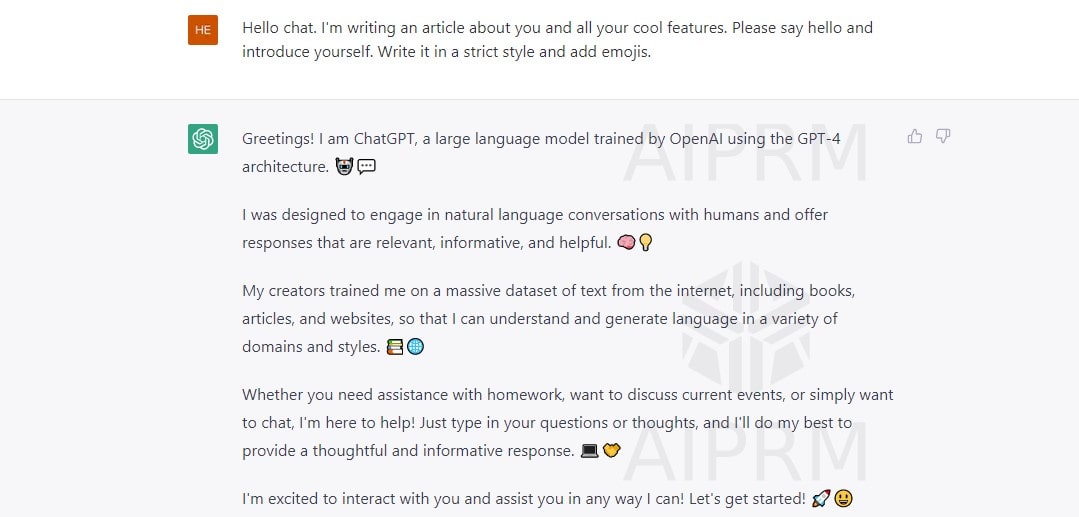
In conversational AI, two names stand tall – Google’s Bard and OpenAI’s ChatGPT-4. These highly capable systems come with features and capabilities, but how do they compare when tested?
Google Bard, an experimental chat service, leaps into action with its Language Model for Dialogue Applications (LaMDA) at its heart. It steps up the game with its advanced language model, PaLM 2, enabling it to perform efficiently and address previous limitations. In addition, Bard’s accessibility extends to multiple languages, showcasing its global reach.
On the other hand, ChatGPT-4, a product of OpenAI, builds on its predecessors’ success with a broader and more robust training dataset. The result is a conversational AI that understands and responds accurately and generates creative content like essays and poetry.
Testing these two titans side by side reveals their distinct strengths:
- Google Bard: Enhanced efficiency with PaLM 2, multilingual capabilities, and web-based information sourcing
- ChatGPT-4: Expanded training dataset, ability to generate creative content, and the power of the next-gen GPT-4 model
Choosing between Google Bard and ChatGPT-4 is not about declaring a clear victor. Each system has its strengths and distinct capabilities that cater to different needs. Whether you need a multilingual assistant or a creative content generator, these AI powerhouses are reshaping how we interact with technology.
Bottom Line
As we wrap up this engaging debate between Google Bard and ChatGPT-4, it’s clear that both systems possess their unique charm. Google Bard dazzles with its poetry mastery, while ChatGPT-4 – armed with superior versatility – offers diverse assistance in tasks beyond creativity, such as assisting with business workflows or managing personal queries.
Through its AI-infused poetry creation, Google Bard offers a glimpse into the future where art and technology walk hand in hand, producing original content with an artificial yet surprising level of authenticity. It’s like a breath of fresh air for poetry lovers who value innovation and novelty. On the other hand, the strength of ChatGPT-4 lies in its ability to understand and respond to a broader spectrum of user prompts – from sharing trending news stories, offering tech tips, or even cracking a light-hearted joke. It’s a tool designed to integrate into our daily lives seamlessly.
In the end, the choice between these AI systems is subjective. It depends on the specific needs and expectations of the user. Looking for poetic inspiration? Google Bard might be your answer. Need a smart, adaptable AI for multiple purposes? ChatGPT-4 is your best bet. It’s like choosing between a specialized gourmet chef and a multi-talented home cook – both have unique allure.
Remember, the power of AI extends beyond these two systems. If you’re in the business world, remember to explore Plerdy’s array of tools – from analytics to heatmaps – that can optimize your website and improve user-friendliness. It’s about choosing the right AI tool for the right task.
So, dear reader, which AI tool sparks your interest? Let us know your thoughts, compare and share your experiences, and continue this fascinating exploration.
